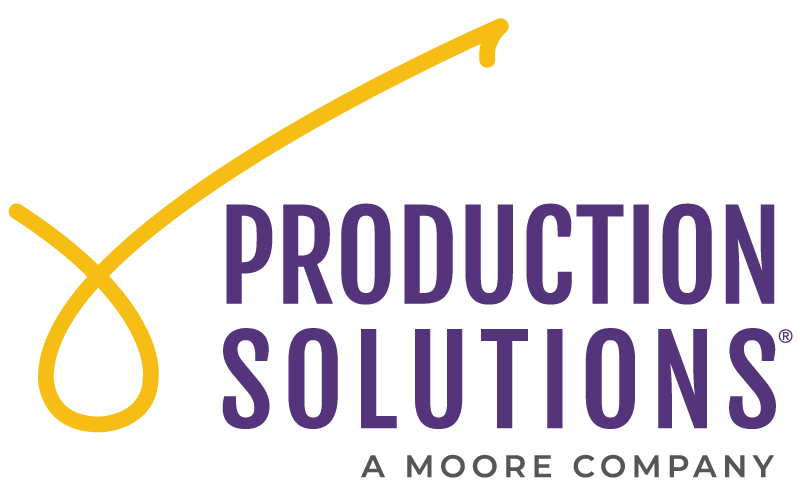Don’t Let Data be Daunting!
 Production Solutions
Production Solutions
We hear it all the time – “It’s in the data! Just look at the data for the answer!” But what exactly is data? Where do you get it? Keep reading to learn what data is, how to capture it, and how to use it in nonprofit market mailings.
What is Data?
According to Merriam-Webster, data is “factual information (such as measurements or statistics) used as a basis for reasoning, discussion, or calculation”. For our purpose of nonprofit marketing, the information you want to gather applies to your donors – who they are, where they live, how much of a donation they gave, etc. From that information, you can decide how you want to market your organization’s mission and how the donor can help.
This information on donors can be collected from many outlets. Whether a donor signs up through your website, puts their name on a petition during an in-person event, or your team procures information through a list-service from a data consultant, taking that information and utilizing it in a direct mail marketing campaign can elevate and encourage that relationship with your donor!
How Is Data Used in the Mail?
When planning out a mailing, we want to make sure we execute precisely how you want your donor’s data to be used in making that connection to continue the relationship. When you send us your data file, we also traditionally receive two additional pieces of information from our partners and clients:
- Data Processing and Mailing Instructions
The Data Processing and Mailing Instructions are a template that our data team uses to ensure your data file is properly processed and as a quality control check. The production expert looks for the following within your data and mailing instructions:
Fields for personalization you want to use in the mailing:
- Your donor data has a lot of options in how you address the mailpiece to them. The salutation of a letter, any variable amounts we need to pull for a Letter or Reply Form. i.e. “Dear Judge Rogers III” or “Dear Mark”
Fields for amounts you want to use in the mailing:
- Noting within the instructions the gift amount you want to convey to the donor. i.e. “Most Recent Contribution”, “Highest Previous Donor Gift” or “Most Recent Membership Gift”. Each organization has its own logic and strategy behind whichever gifts they ask PS to utilize.
- FPO Copy/Variable Marketing Copy
In addition to the data file and the instructions on how you would like the fields in the data to be applied, our clients and partners also provide us “FPO copy”. FPO stands for “For Position Only” which means that the copy is variable and will be personalized to the specific donors. This is different from the print artwork which is produced prior and PS then places the FPO copy over it.
If you want to call out your organization’s efforts in your donor’s region, you can specify that within the FPO copy. For example, if your donor Judge Rogers III lives in Bethesda, Maryland your Outer Envelope could have an FPO inkjet copy that reads “Open Up to See Our Positive Impact in Bethesda!” In this case, the copy “Open Up to See Our Positive Impact in <<City>>!” is being placed in your donor’s city to personally draw their attention.
Data Production
Now our team has received the organization’s Data File, Data Processing and Mailing Instructions, and the FPO Copy for the print components. Next, the production expert will process the Data File and provide Input Counts, Output Counts, the ASK Build/Amount Build reports, and any further reports to the client for their review.
Input Counts are the straight counts we have pulled from the data file to ensure all records are included. Depending on if you have different groups within your data that you want to strategize to mail to (maybe one mail package gets a Liftnote and one package gets a different type of envelope), the input counts show those breakouts by package based on your Data Processing and Mailing Instructions.
Output Counts are the final set of counts for your mailing before we start to personalize. The counts are to show any suppressions requested, duplicate records that need to be dropped, any donors who have since passed away, or any SEEDS you want added in. As with the Input Counts above – if you have different packages for mailing to donors within the file then those will be displayed as well.
A SEED is a replica of the mailing to be mailed to the production expert. This helps to track the delivery turnaround and see the finished direct mail product.
The ASK Build/Amount Build reports are generated if your team requests so – this involves how you want to build out your ask amount to the donor and any growth you would like so your donor gives more to your organization’s cause. A traditional ASK build looks like “ASK1, ASK1.5, ASK2”. For example, if your donor Judge Rogers III gave an amount of $100.00 in their original donation you might consider building out their ASK amounts to “$100.00, $150.00, $200.00” in hopes they will increase their donation amount.
Once the client has confirmed that the final mail counts and the ASK Builds are correct, then PS will proceed to “Setups & Data Dumps”. The Data Dump is a snapshot of the data for the donor (i.e. it shows the data files for that particular donor; the street address, the most recent gift they made, when their membership expires, how many past gifts they have given, etc.). The Setup is a PDF showing how the donor’s data, FPO Copy, and artwork all collaborate.
This is the last step before physically lasering/printing that personalized copy onto the print pieces. Once PS has the approval from the client to move ahead, the mailing enters personalization and final lettershop finishing to complete!
As the Non-Profit Industry continues to evolve, we at Production Solutions want to continue to provide flexibility, innovation, and solutions to make sure your Direct Mail Marketing utilizes your data in the best way possible.





